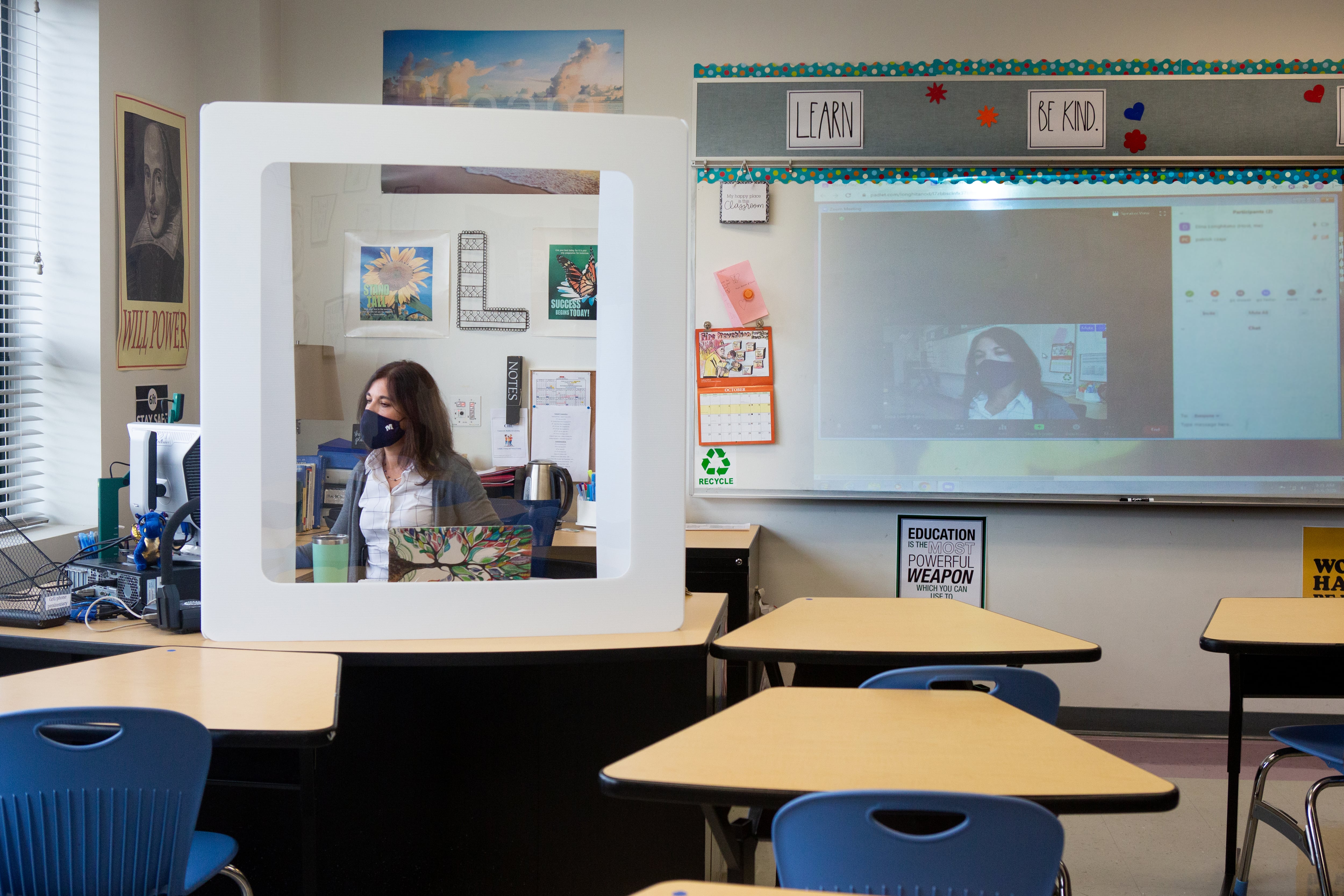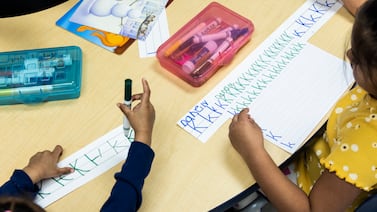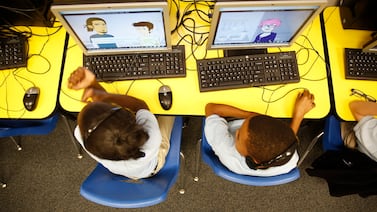It’s the last week of classes for high school theater teacher Stephen Berlanga, who has spent most of the year trying to teach students in classrooms and at home at the same time. Despite nearly a year of practice, it hasn’t gotten much easier.
“I keep trying to make sure I’m paying attention to the virtual kids, I’m asking them questions, and alright, I’m going to pivot back to the in-person kids and ask them questions,” said Berlanga, who teaches in Palm Beach County, Florida. “Finding that balance where it feels adequate for both groups is insanely difficult to do.”
That juggling act has been one of the major sources of stress this year for Berlanga, as well as a large share of U.S. teachers, according to a survey released Tuesday. Those feelings added up: the survey found that rates of stress were higher among teachers than most other working adults during the pandemic.
The findings offer a window into the specific ways schools struggled to function as usual this year, especially when it came to reaching students, and how that affected educators’ health and wellness. The results also suggest that school officials should consider teachers’ perspectives when deciding how to handle demand for remote instruction next school year.
The survey — released by the research firm RAND and funded by the National Education Association and American Federation of Teachers — asked a nationally representative sample of public school teachers a battery of questions in late January and early February.
More than three in four teachers reported frequent job-related stress, compared to 40% of other working adults. Perhaps even more alarming: 27% of teachers reported symptoms of depression, compared to 10% of other adults.
There were many contributors to stress. Most teachers said the difficulty of maintaining contact with students and their families, supporting students’ social-emotional health, and keeping students engaged were factors.
At Berlanga’s school, there was often a disconnect between students and teachers, he said. Many teachers began the year by assigning less work than usual. But then as they ramped up expectations, students felt that teachers weren’t appreciating what a challenging year it was and struggled to turn in assignments. Teachers, in turn, grew frustrated when they couldn’t reach students and their families. “Everybody is mad at each other now,” Berlanga said.
A substantial minority of teachers were also stressed about their own health or the health of a loved one, the survey found.
Remote teaching — done with little training but with frequent technical glitches — was also a major stressor, and so was bouncing between online and in-person teaching throughout the school year. “I feel I cannot get a grip and plan for things one way or another,” one teacher explained to the researchers.
It’s possible an uptick in stress will translate into an uptick in teachers leaving the classroom. According to the survey, 23% of teachers — and nearly half of Black teachers — said they were likely to leave their current jobs by the end of this school year. Those teachers also reported particularly high levels of stress.
“Stressful working conditions, many of which have been exacerbated by the COVID-19 pandemic, appear likely to spur some teachers who might not otherwise have considered leaving to consider doing so this year,” wrote RAND researchers Elizabeth Steiner and Ashley Woo.
Other experts are expecting a small but meaningful increase in teacher turnover going into next school year, especially since the economy has improved, providing new paths for dissatisfied educators. As one teacher told the RAND researchers, “If something better comes along, I will leave.”
But there are reasons to be skeptical that turnover rates will be as high as the survey implies. When teachers were simply asked whether they planned to return to teaching at their current school next year, only 6% said no, and another 13% were unsure.
Meanwhile, a separate RAND survey indicates that teacher unhappiness may have declined somewhat as the school year progressed. When asked in March, 18% of teachers said they would leave their job by the end of the year, notably lower than the share who said they would just a month or two before.
Although some feared that there would be a teacher exodus after the pandemic hit, turnover in the summer of 2020 appeared to be slightly lower than in typical years, likely because of a weak economy that left teachers with few other options.
Steiner says that regardless of whether more teachers end up departing the classroom, school officials should pay close attention to the results.
“There’s a group of teachers who are experiencing more stress than their colleagues,” she said. “There’s a need to provide support around that and to prevent this intention from turning into an action.”
In good news for schools hoping to hold onto their educators, next school year is likely to look much different than this one. Health concerns will likely be diminished, given the availability of vaccines, and frequent toggling between virtual and in-person is likely to be a thing of the past. But to meet continued demand, some districts say they will still offer remote instruction, which could again prove challenging to teachers if simultaneous instruction continues or unwilling educators are pressed into online teaching.
Berlanga, for his part, plans to stay in the classroom next year, when his job will look notably different.
“The school district of Palm Beach County has declared that everybody will be going back to brick and mortar starting in the fall,” he said. “There will be no more hybrid — which I am relieved about.”







